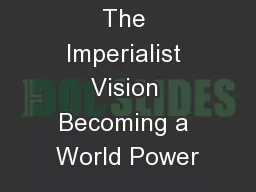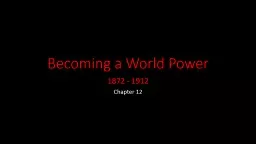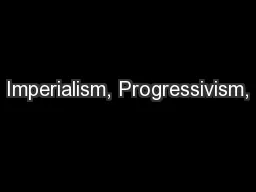PPT-The Imperialist Vision Becoming a World Power
Author : giovanna-bartolotta | Published Date : 2018-03-19
Why did the US assert itself as a world power In the 1880s economic and military competition from Europe and a growing feeling of cultural superiority convinced
Presentation Embed Code
Download Presentation
Download Presentation The PPT/PDF document "The Imperialist Vision Becoming a World ..." is the property of its rightful owner. Permission is granted to download and print the materials on this website for personal, non-commercial use only, and to display it on your personal computer provided you do not modify the materials and that you retain all copyright notices contained in the materials. By downloading content from our website, you accept the terms of this agreement.
The Imperialist Vision Becoming a World Power: Transcript
Download Rules Of Document
"The Imperialist Vision Becoming a World Power"The content belongs to its owner. You may download and print it for personal use, without modification, and keep all copyright notices. By downloading, you agree to these terms.
Related Documents














